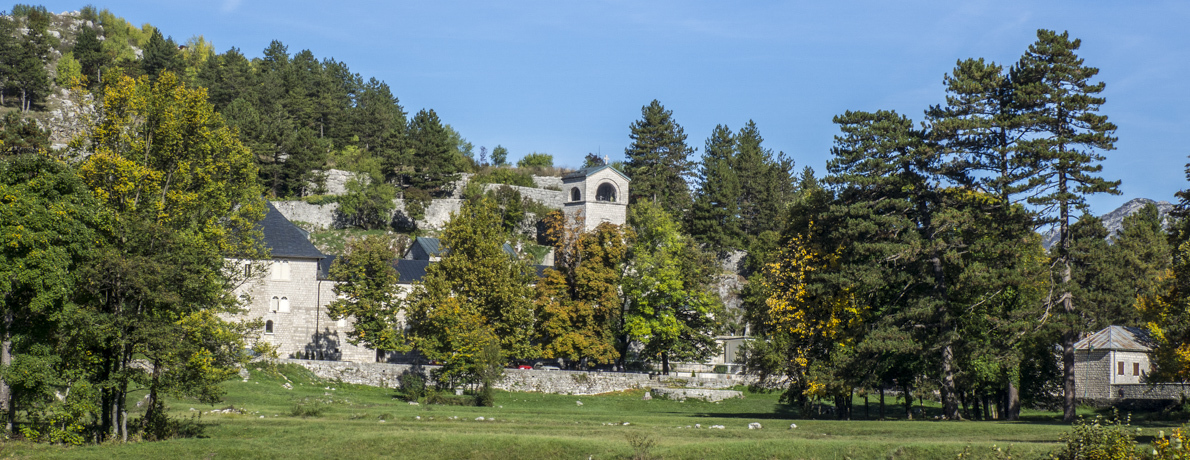
Fortified by the foothills of Mount Lovćen and protected by Lake Skadar it is no wonder King Nikola chose Cetinje as his Royal Capital in the Kingdom of Montenegro. He was the first and last king. His dynasty may have ended but his legacy of elegant buildings lives on.
Montenegro, once an autonomous province of the Ottoman Empire, emerged as an independent principality in 1798. But it was not until 1878 that its independence was recognised internationally. At that time Nikola I Petrović-Njegoš, then the sovereign prince became the king of the Kingdom of Montenegro. He ruled from 1910 to 1918 and Cetinje was his royal capital. International recognition of his kingdom heralded the arrival of ambassadors from other countries and the building of elegant embassies. Today these lovely buildings house museums and other important institutions. After the first World War Montenegro was incorporated in a new kingdom Yugoslavia. Due to its geographical location Cetinje was unable to respond to the needs of a modern capital city. Since 1946 Podgorica has been the capital city of Montenegro which regained its independence in 2006. Today Cetinje is still the supreme city in the hearts of many Montenegrins.

Lovćen National Park in Cetinje in Montenegro
Cetinje has the unusual privilege of being part of two national parks. The old town is surrounded by the mountains of the Lovćen National Park and the waters of the Skadar Lake National Park are close to its commercial centre. The Lovćen National Park in the Dinara Alps encompasses Mount Lovćen, the Black Mountain from which Montenegro gets its name. A path from its lowest point in Cetinje to the highest point at 1749 metres goes through no less than nine different habitats. This unique environment has a wide diversity of flora and fauna. Montenegrins consider Mount Lovćen and the surrounding area to be sacred and Lovćen is a symbol of their country. The park is also home to the mausoleum of Petar II poet and Montenegrin ruler from 1830 to 1851. Creeping up the slopes of the national park are the buildings of Cetinje Monastery.

Cetinje Monastery in Cetinje in Montenegro
Cetinje Monastery has its origins as far back as 1482. This was the year when Ivan Crnojevic, founder of Cetinje, built his castle and a monastery in the shadow of Mount Lovćen. There is nothing left of the castle but some remains of the monastery can be seen in the area between the Cetinje Monastery, the Biljarda and King Nikola’s Palace. This area is known as the Ćipur and close by is an imposing statue of Crnojevic, also known as Ivan the Black.
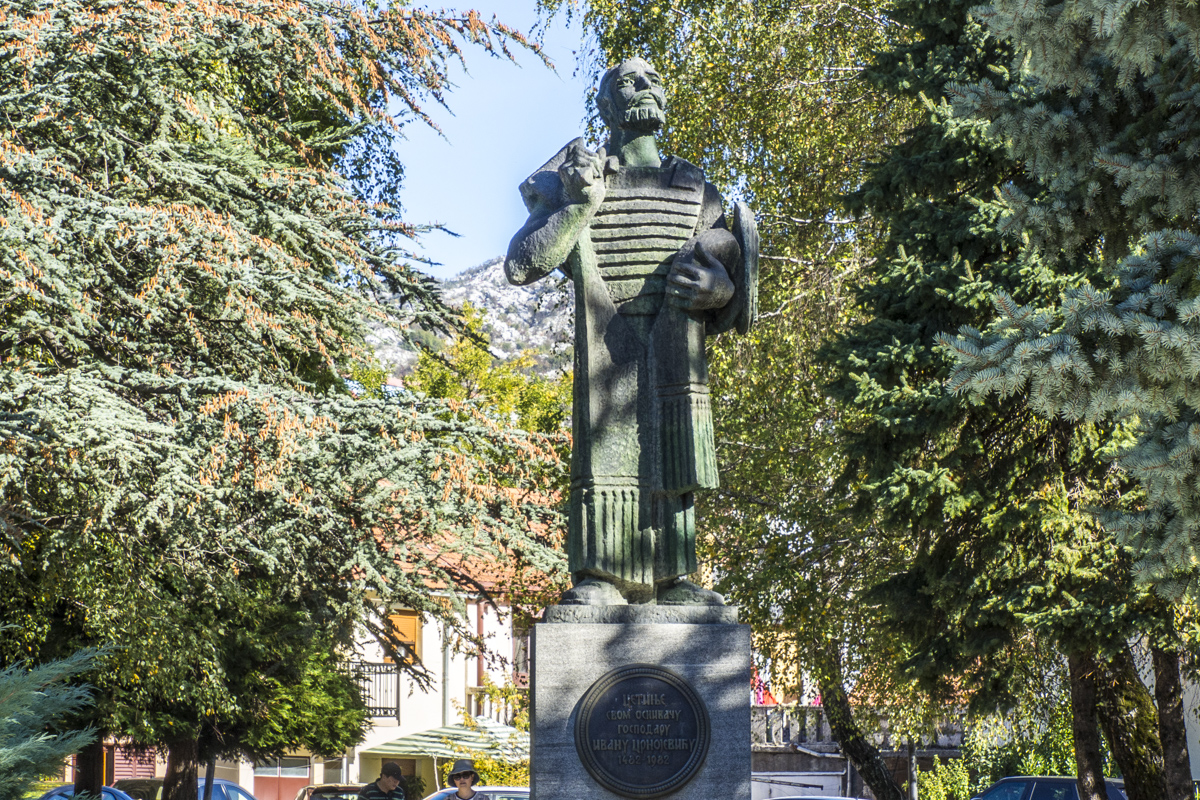
Following the destruction of the Crnojević Monastery, Bishop-Prince Danilo, the founder of the Petrović Njegoš dynasty (1696 to 1916) built the Cetinje Monastery in 1701. This new monastery retains some of the characteristics of the Crnojević Monastery including some of the old sculptural elements that can be seen in the centre of the loggia on the second floor. Over the years the monastery complex has been adapted and extended. It underwent a substantial restoration in 1927 when a new residence was added. A church dedicated to the Virgin Mary’s Nativity is situated at the centre of the complex, the final resting place of Duke Mirko, father of King Nikola. Today the public have limited access to Cetinje Monastery. In theory only groups have access to the Treasury but in practice it is always worth a try – particularly in the morning. Close to the monastery is the court church, a chapel built on the ruins of the original monastery.
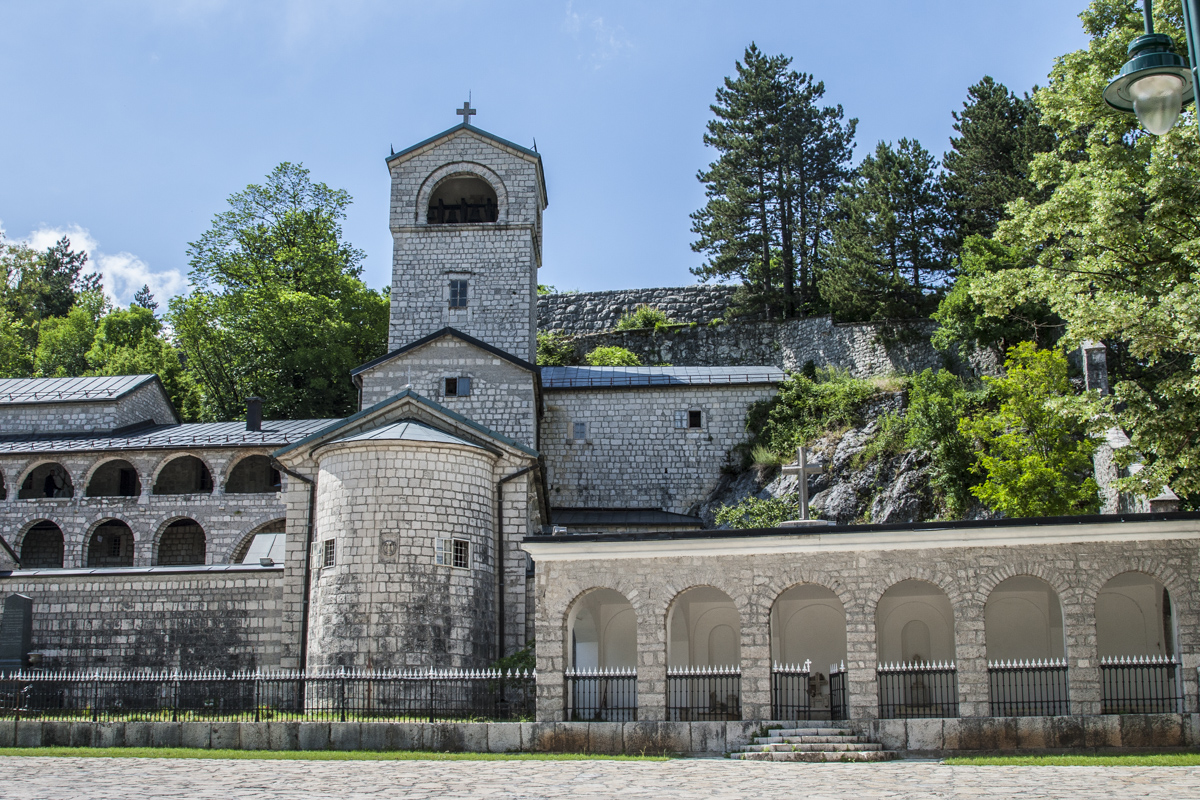
The Court Church of Ćipur in Cetinje in Montenegro
The Court Church (Dvorska crkva) was built by King Nikola in 1886 on top of the ruins of the Crnojevic Monastery. It is the burial place of Ivan Crnojevic, founder of Cetinje and King Nikola, first and last king of Montenegro. He went into exile in France in 1918 but continued to claim the throne until his death in the French town of Antibes three years later. In 1989 his remains and those of his wife, Milena were brought back here from their first resting place in Sanremo in Italy. Not far from this chapel is the Njegos`s residence or Biljarda, the billiard hall.

Biljarda in Cetinje in Montenegro
Biljarda or the billiard hall was the residence of Petar II Petrović-Njegoš, generally known as Njegoš. A titan of a man this poet and prince ruled Montenegro from 1830 to 1851. He built Bilijarda in 1838 with financial aid from Russia and plans drawn up by the Russian emissary architect Jakov Ozereckovski. Originally known as the New House it became known as Njegos`s Billiard pool hall following the installation of a pool table. The rectangular stone building was encircled by a stone wall with towers and gates. Twenty-five rooms occupied the two-storey building. Njegos`s pool table is still kept in the largest of these rooms. Biljarda was used as the prince’s residence until 1867 when King Nikola built his own palace. After that it was used to accommodate government departments and as a military institution. Biljarda has undergone many changes over the years including the removal of its towers and sections of the walls. Today, following the restoration of the Billiard pool hall to its original appearance it is now a museum open to the public. Nearby, the palace that King Nikola built is also a museum.
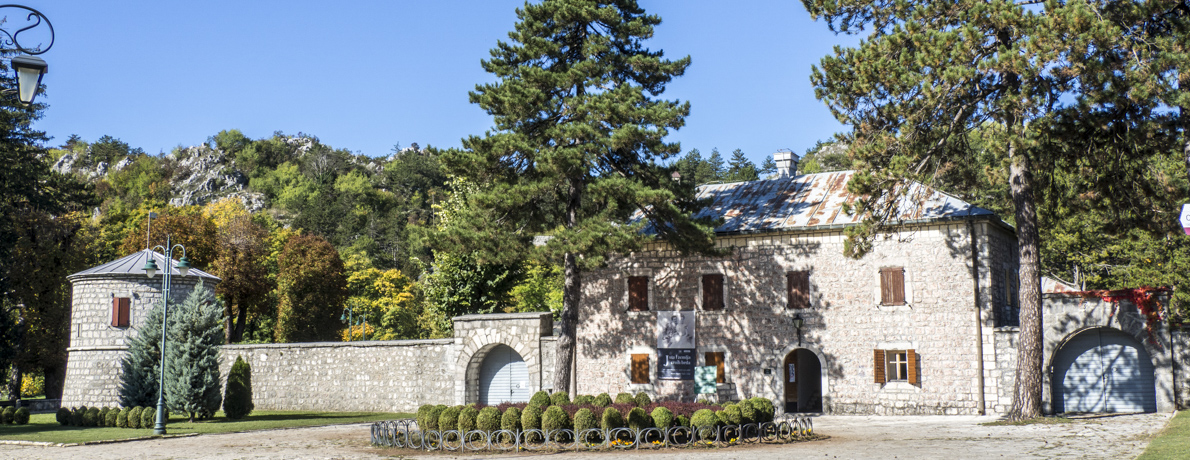
The Palace of King Nikola in Cetinje in Montenegro
When the building of King Nikola’s palace began in 1863 it was intended to be a home for the widow of the king’s predecessor Princess Darinka. Darinka, the first Princess Consort was a powerful woman and overshadowed the new queen, Milena until she finally left the court. When she finally left the royal family moved into the new palace where they lived until force to leave in 1918. This royal residence has undergone several changes but the last, and most important, was in 1910 when it took on the appearance it has today. The palace is now a very interesting museum recording the life of the first (and last) king of Montenegro. Nikola had twelve children. Several of his daughters married into European royal families and Nicola became known as the Father-in-Law of Europe. Particularly famous was his daughter Elena who married Vittorio Emanuele III, king of Italy. Cetinje is a mecca of museums and three of them occupy an impressive building, Government House or Vladin Dom.
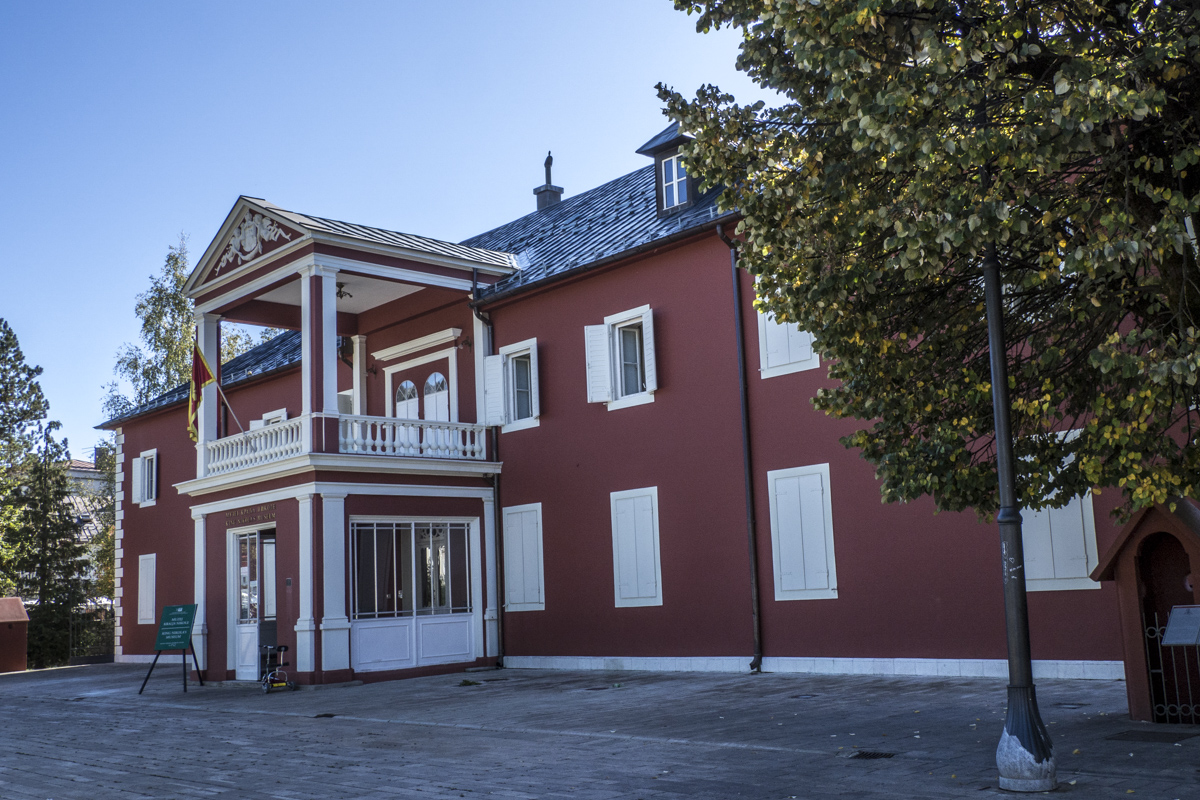
The Museums of Cetinje in Montenegro
The National Museum in Montenegro has five departments situated in historically important buildings. Two of these museums are in Government House (Vladin Dom), the former Parliament building that opened in 1910. The Museum of Fine Arts of Montenegro was founded in 1950. The permanent exhibition in the National gallery in Vladin Dom includes the Collections of Montenegrin and Yugoslav Art. The Historic Museum of Montenegro opened in 1989 answering the need for a space to display the collections relating to the identity of Montenegro and its people. The exhibits are housed in one space inside the building.
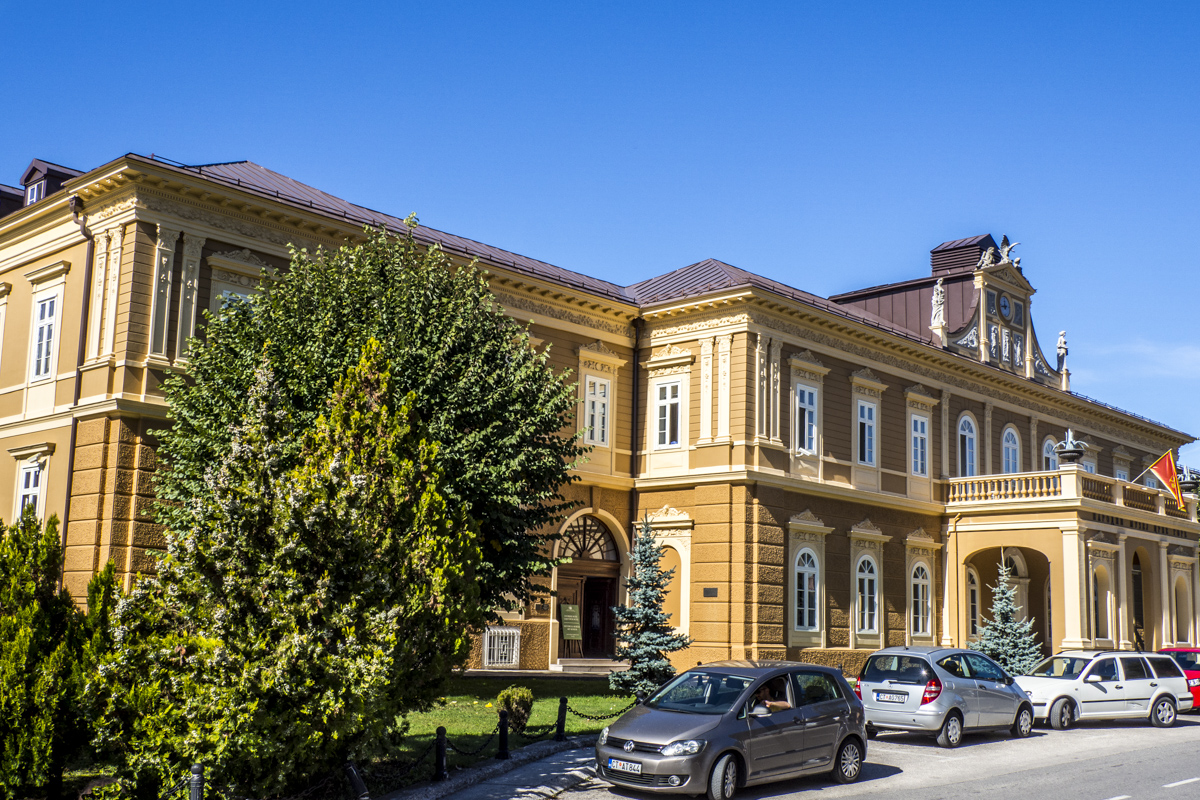
The Ethnographic Museum of Montenegro was founded in 1951 and was originally housed in the Biljarda building. Following the terrible earthquake of 1979 the entire collection was moved to Vladin Dom. In 1987 when ownership of the former Serbian Embassy passed to the National Museum of Montenegro the museum moved there. This museum comprises both permanent and temporary exhibitions. It has some unique hand-crafted items on display. Cetinje also has a Money Museum. This unusual museum is housed in the building occupied by the Central Bank of Montenegro. This building, the home of the former Montenegrin Bank was built in 1906. Other former embassies have also been put to good use. These include the former French and Italian embassies now the National Library and the former Russian embassy that is now the Faculty of Fine Arts part of the University of Montenegro.
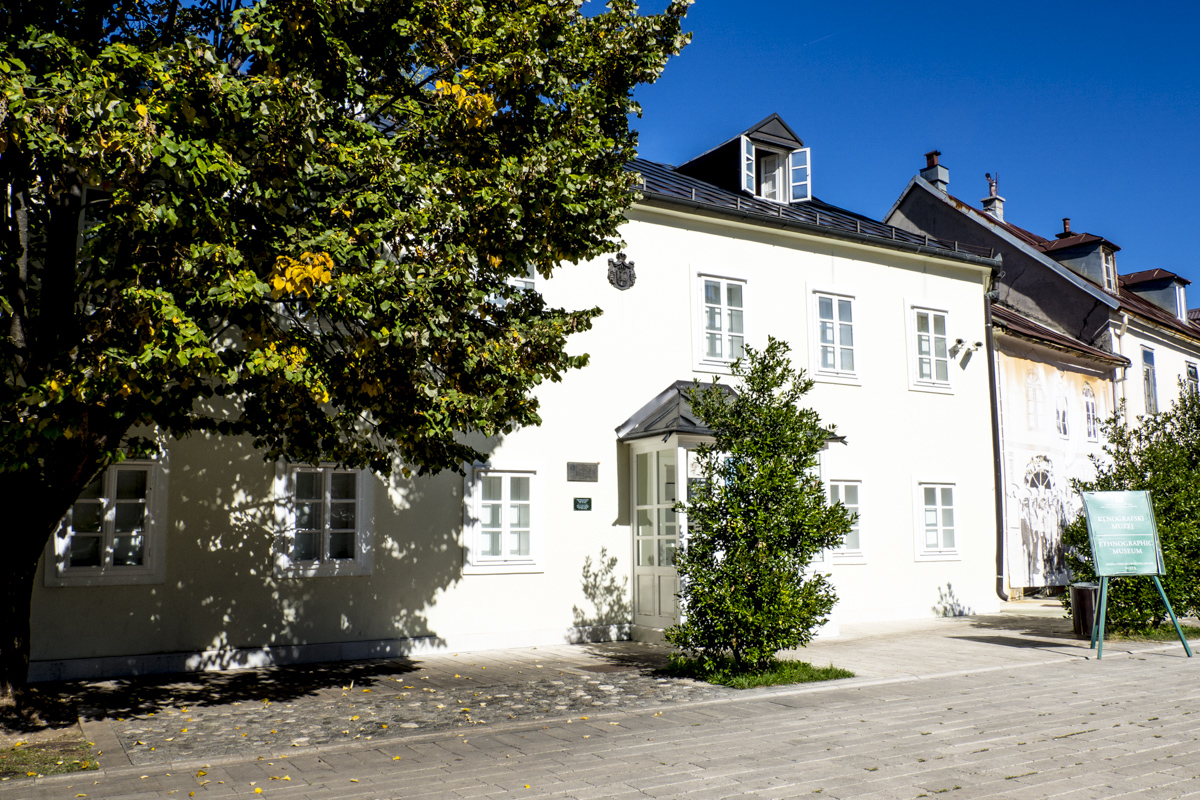
The Fairy of Lovćen in Cetinje in Montenegro
Visitors entering (or leaving) Cetinje cannot fail to notice an enchanting bronze statue of a lady on a tall plinth. She is the Fairy of Lovćen and was placed there in 1939. It is a memorial to the 350 to American Montenegrins who died when their boat was sunk off the coast of Albania. They had answered the call to return home to fight for Montenegro. Behind this monument is Vlachs Church. Originally built during the fifteenth century its present appearance was achieved in 1864 following some major changes. The unique fencing around the church yard was fashioned from pipes and rifles confiscated during the wars against the Turks in the latter half of the nineteenth century.
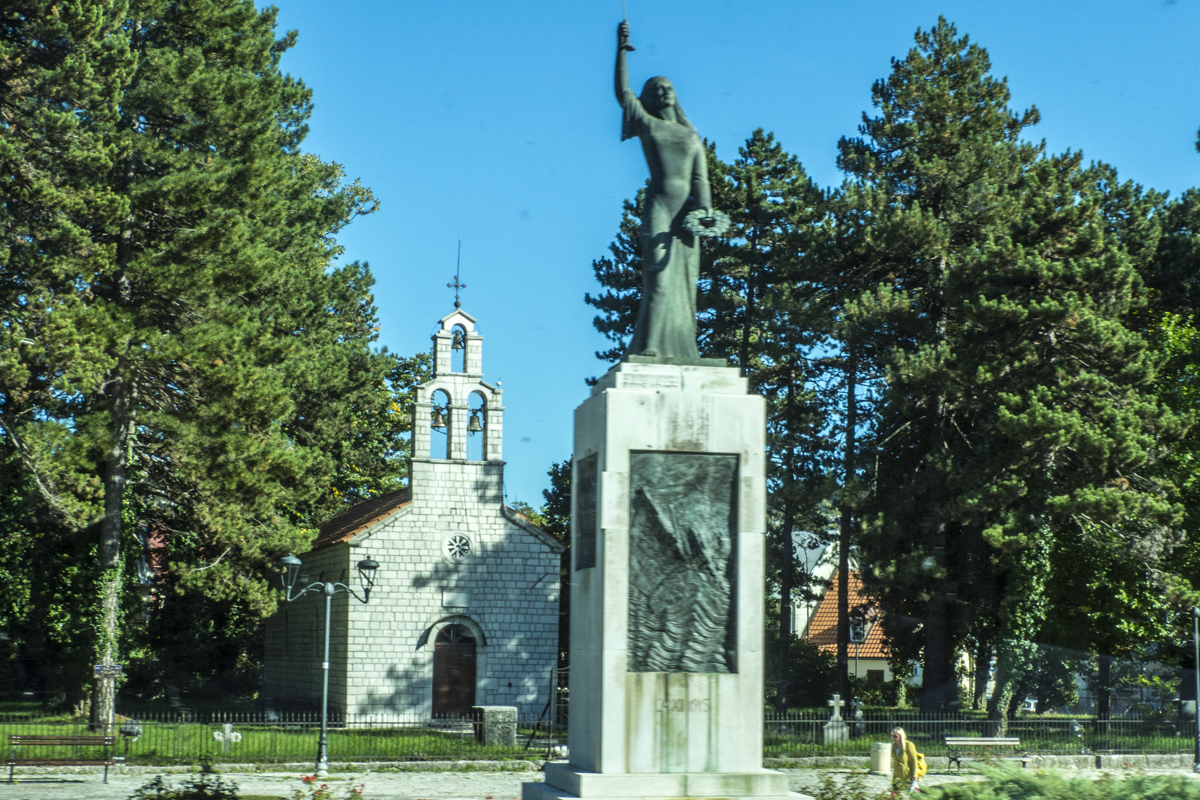
Where to Stay in Montenegro
During my visit to Monetnegro I stayed in Budva at the Falkensteiner Hotel above the Bečići Beach one of the most well-known beaches on the Budva Riviera. Situated on the cliff tops its bedrooms and sun terraces look out across the beautiful bay below. The beach is accessible following a footpath through the grounds of the hotel leading on to a bridge crossing the main road. Once on the sea front guests can enjoy the lovely beach and a variety of good restaurants serving traditional Montenegrin dishes. The well-appointed bedrooms in this recently refurbished hotel have everything a guest could want for a comfortable stay from tea and coffee-making facilities to a large, flat screen television. But who would want to stay inside when they can relax on the large sun terrace enjoying the beautiful landscape that surrounds the hotel. Or, enjoy a refreshing swim in the infinity pool. Excellent buffet breakfasts and dinners are available in the hotel restaurant which has a large outdoor terrace. An a la carte menu is also available in the extensive bar area.

How to get to Cetinje, Montenegro
Fly to Dubrovnik then enjoy the two-hour scenic journey and in particular the crossing of the Bay of Kotor. Airport transfers are available and can be booked online. But a hire car may be a better option in order to explore further afield. I stayed in Budva when I was in Montenegro and visited Cetinje on a day trip.
Available on GPSmyCity.com
This article is now featured on GPSmyCity. To download this article for offline reading or travel directions to the attractions highlighted in this article, go to Walking Tours in Cetinje on GPSmyCity
This article is based on the personal experience of Valery, an ExperiencedTraveller. I visited Cetinje on a trip organised by Solos Holidays.